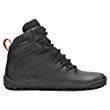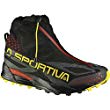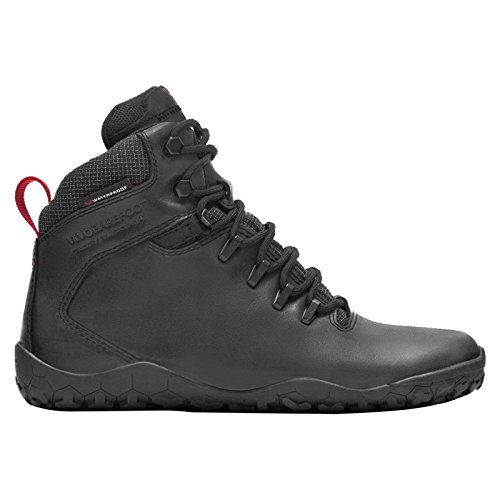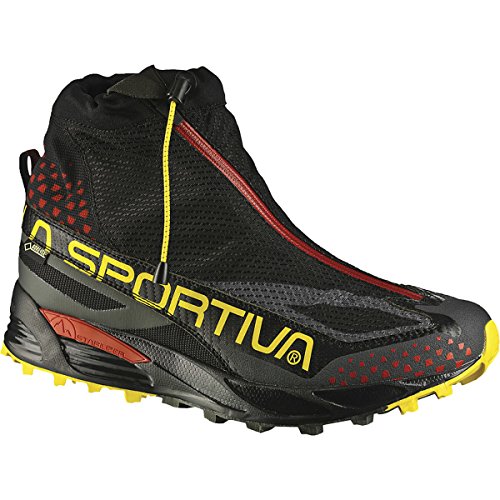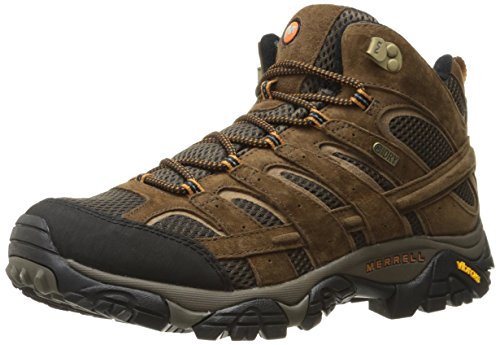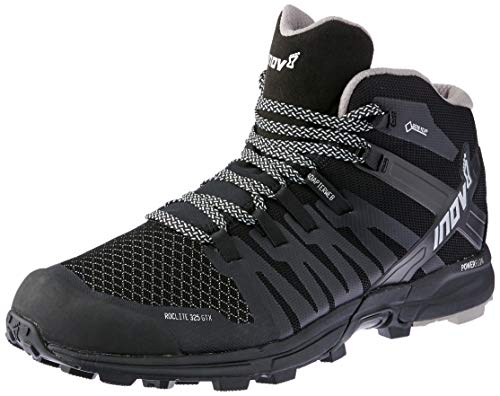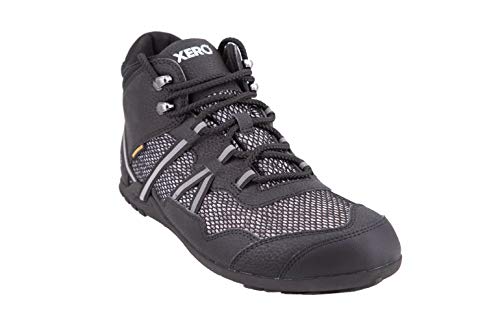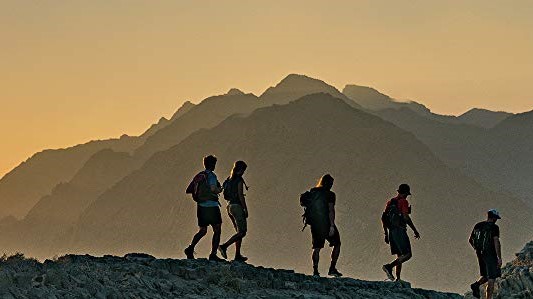
We all know that trail-running shoes tend to be the top pick for lightweight hikers on the trail. There are times, however, when shoes just won’t cut it and we need to upgrade to some lightweight minimalist hiking boots.
More...
Lightweight, minimalist, or barefoot hiking shoes can initially seem like odd choices. However, when we really look into it, there are tons of reasons to choose lightweight boots.
When it’s time to start looking for those minimalist hiking shoes, there can be a lot to know. What materials should they be made from? Do I need waterproof hiking boots?
I’m going to help you learn what to look for and what to avoid. We’re also going to cover a few minimalist hiking boots that you can get started with so you can spend more time hiking the trails and less time scrolling around the web!
Comparison Chart
Name | Price | Weight | Rating | Notes |
|---|---|---|---|---|
$$$ | 1 lb | Hydro guard lining and firm ground, off-road lugs, tracker is made for rugged, Rocky terrains. | ||
$$$ | 2.33 lbs | Gore-Tex® trail running shoe with an integrated gaiter, designed for off-road running in winter months, snowshoeing, or as a great après-ski boot. | ||
$$$ | 12 oz | Merrell M Select FIT.ECO+ blended EVA contoured footbed with added zonal arch and heel support | ||
$$$ | 1 lb | Gore-Tex Upper Shoes engineered with GORE-TEX Extended Comfort product technology are designed for indoor and outdoor use in moderate and warmer conditions or during higher activity levels. | ||
$$$ | 2.4 lbs | Best for protecting the feet while minimizing the intrusion of shoes. | ||
$$$ | 7 oz | Best for the lightest possible hiking boot setup when paired with a gaiter. | ||
$$$ | no info | Best for minimalist waterproof protection with a killer warranty that can stretch your dollar. | ||
$$$ | 1.64 lbs | Best for those who want a waterproof custom-fit in an extremely minimalist package. |
How to Choose the Best Minimalist Hiking Boots for You
What are minimalist hiking boots?
Minimalist hiking boots have capitalized on a niche modern trend toward more ergonomically natural footwear. Essentially the idea is that minimalist hiking boots protect your feet from damage (sharp rocks, sticks, glass, etc.) and/or the elements (water during cold seasons) and little else.
Now, I’m no expert on the physiology, research, or myths around minimalist footwear and barefoot running. However, many proponents advocate that barefoot (or near-barefoot) hiking and running has many benefits.
In fact, Runner’s World, one of the leaders in running media, has an entire section dedicated to barefoot running. You can also find out more about the research behind the pros and cons of barefoot running over at BreakingMuscle.
While minimalist hiking boots aren’t running shoes, many of the same arguments for and against barefoot running carry over into minimalist hiking boots.
I personally like lighter, more minimalistic hiking footwear. I’ve been using trail running shoes for years because I love the lightweight, terrain feel, and agility as opposed to heavy bulky conventional hiking boots. Simply put, minimalist hiking boots and shoes just take this one step further.
Types of Minimalist Hiking Boots
For the purposes of this article, we’re going to take a look at a few different types of minimalist hiking footwear. Primarily we’ll focus on lightweight minimalist hiking boots.
To help shed some light on all the footwear choices out there, we may also cover barefoot footwear.
While minimalist hiking boots seek to trim down the traditional hiking boot, barefoot footwear seeks to replicate the mechanics and feel of not wearing any footwear at all!
Because injuring your feet on a hiking trip can lead to life-threatening emergency situations, we definitely don’t recommend actually hiking barefoot.
Why Wear Minimalist Footwear?
While I wouldn’t call myself a minimalist footwear expert, I do enjoy using minimal running shoes and I’ve tried minimalist hiking shoes in the past. I’ll try to illustrate a few points that attract people, in general, to a minimalist footwear perspective.
Of course, there are probably a lot more reasons why people might go with a minimalist hiking boot but these are a few of the major ones.
If you are considering making the switch (or maybe you already have) leave us a comment with your reason!
Waterproof Hiking Boots
Whether you choose heavy-duty full leather hiking boots or the lightest minimal hiking boots on the market, you still need to decide on a few things. One important question is, “Do I need waterproof boots?”
What that really boils down to is one simple thing – will wet feet be a danger to life or limb on the trail?
During the summer, in hot climates, wet feet are usually not a danger (and sometimes are unavoidable).
In shoulder season and winter season conditions, however, wet feet can really become a threat to health. Things like hypothermia, frostbite, and non-freezing cold injuries (NFCI) are real problems stemming from cold and wet feet.
When temps drop into the danger zone (low 50’s and below) and there’s a chance of liquid water either on the ground or falling from the sky, waterproof footwear might be worth thinking about.
Lightweight Boots During the Summer
Mesh, nylon, and polyester are all great lightweight materials for summer hiking boots. Even some boots made from leather can be carefully selected to be “lightweight”.
During the summer you may not need waterproof boots which means you can wear minimalist boots that forego many features in favor of a lighter weight.
It begs the question, however, of why one might choose a minimalist hiking boot instead of a trail running shoe…
There are two main advantages that minimalist hiking boots have over a trail running shoe:
- 1More ankle support (even if it’s a little)
- 2More protection
While we won’t debate the details of the “ankle support” argument for hiking boots, I will say that if you have a history of ankle problems and your doctor recommends something with maximum ankle support, that may be a valid reason to opt for a boot.
The other advantage of a boot is more physical protection from sticks, rocks, and brush. For off-trail hiking or scrambling, the last thing you want is to grind your ankle across a boulder. Wearing an over-the-ankle boot can add a little protection in this way.
Gaiters: It’s worth noting that lightweight hiking boots pair better with traditional gaiters than running shoes.
Note: Minimalist hiking boots may specifically avoid providing any musculoskeletal support to promote a more “minimalist” feel. If you’re in need of medical joint support consult your doctor, please.
Boot Sole Treads and Traction
One of the most important functions of a hiking boot is providing traction. While I’m no expert on rubber manufacturing or sole construction, I can tell you what to look for!
Of all the surfaces you’ll encounter on the trail, mud is the most prolific and problematic. To deal with it, you want to find boots that have really aggressive treads with wide spacing. This allows the sole to dig into the mud and then release the mud as you step.
The downside of a large tread is that it wears out quickly and isn’t as efficient for walking as finer tread and sole styles.
Minimalist hiking footwear tends to have very thin soles with little or no padding. This allows you to feel what is underfoot and, over time, helps with the transition to barefoot hiking should you be ballsy enough to do so.
I like thinner soles because you can really feel the footing under you. I feel less likely to twist my ankle because I can tell exactly what’s under my foot and how my foot positions relative to it at any time.
You may also run into the term “shank” which refers to the thickness and stiffness of the sole of the shoe or boot.
Toe Caps and Protection
There are many ways a hiking shoe or boot protects the foot. Hard heel cups, reinforced or rubberized outers, and toe caps are all viable protections for hiking.
Toe Caps wrap around the front of the shoe or boot. These protect your toes when you accidentally stub your toe on a log or a rock.
Rands or exterior protection on the sides of the shoe or boot protect from brushing up against twigs, logs, and rocks.
Rock Plates are located on the bottom of the shoe and they’re essentially hardened insoles that protect from stepping on particularly sharp or jagged rocks.
Breaking In Minimalist Hiking Boots
Before you go hit the trail with new hiking boots, you really do need to break them in most of the time.
When do you not need to break in boots? If you’re not usually prone to blisters and you’re doing a short day hike, you probably don’t need to have them broken in.
You definitely need to have your boots broken in if you’re about to begin a multi-day hike with high mileage. If you’ll be on the trail more than two days and you’re planning to do 12+ miles a day then make sure you’ve already tested and broken in your boots.
Can I Hike in Sandals?
This is a pretty fair question since we’re dabbling in the realm of minimalist hiking footwear. First let me say that, of course, sandals don’t count as “minimalist boots” but they can be a lightweight option… or can they?
By far the biggest issue with sandals on the trail is foreign object intrusion. How many times have you stubbed your toe on a rock or tripped on a stick while hiking?
Wearing sandals means that each of those incidents could become a medical situation if the stick gashes your foot or you get a splinter under a toenail that later gets infected. I know it’s gross, but it’s a real problem.
Some sandals feature toe caps and toe protection but even these usually have some element of open or exposed skin and if you hike in them long enough you’ll run into a problem.
While I have hiked in my Chacos before, I can’t say I’d recommended it in any situation other than short, near-the-car casual hikes.
Best Minimalist Hiking Boots 2020
Vivobarefoot has been seeking to give hikers, runners, and walkers a barefoot or transitional experience for a while now. Their Tracker FG is the leading hiking boot model from their lineup.
- 11.6 ounces each
- Waterproof
- Men’s / Women’s Models
One of the best features out of the gate, in my opinion, is that they make these great boots in both men’s and women’s models. I think it’s worth noting because many manufacturers have wildly different gender versions of footwear.
Inside the Tracker FG is a removable thermal insole. This is great for winter when you don’t want to freeze your feet off! During the summer you can ditch the insole for a better “ground feel” and more flexibility in the boot.
Over the entire sole is a diamond-shaped 3mm lug that can cut through mud and stick to rocks. To top if all off, they managed to put it all inside a leather boot that looks good and keeps the water out.
LaSport (as they’re often called) has been making some great cutting edge lightweight backpacking and climbing footwear for years now. Their Crossover gaiter+trail runner is something between cheating the system and winning entirely!
- 13 ounces each
- Waterproof
- Men’s
While this is technically a waterproof trail running shoe, it incorporates an integrated gaiter and waterproof outer. That’s why it earned a place on our minimalist hiking boots list – it checks all the boxes of a boot but disguises itself as a shoe!
Underfoot is a sole made from insanely aggressive treads specifically meant to tackle off-road winter running conditions. You also get an internal speed lacing system that, “lets you easily slide the shoes on and off”.
I’d say these shoes are a great choice if you’re looking to bridge the gap (or “crossover”) from shoes into boots while getting the best of both worlds.
Merrell is no new name in hiking footwear and since they’ve been around they’ve done a great job of delivering men and women alike some great hiking shoes. These might not be cutting edge but they’re a solid choice for a lot of people so I think they merit a look for us.
- 18 ounces each
- Waterproof
- Men’s and Women’s Models
I’m not particularly thrilled with the weight of these boots, but they’re light considering the features. They’re a mid boot which means “over the ankle” and any mid boot will be heavier than a hybrid like the LaSport Crossover. Considering that they’re a true mid boot, they’ll keep groundwater out a bit better than runners.
Underfoot is a Vibram sole. These are reliable, tested soles that you know will work great – Vibram is a prolific maker of hiking soles though not necessarily focused on ultralight.
Another advantage is a toe cap which you won’t find on something like the Vivobarefoot. That added protection can really save your digits in the field.
If you want something that’s reasonably light but you just can’t give up the features of a full-fledged hiking boot then look here.
Inov-8 is a company that’s relatively new to the scene, or at least relatively new to gain the limelight. They focus on fastpacking (ultralight, ultra-fast) and trail running which shows in their products because these boots are going to give even the best competition a serious run for their money!
- 11.3 ounces each
- Available in Waterproof Model
- Men’s and Women’s
These mid-boots have some awesome aggressive tread on the soles which tells me they’re ready to tackle nasty trails. On the toe is a rubber cap and a wrap around rubberized coating for additional protection.
Somehow, though, the boot itself seems to be an over-the-ankle trail runner. It’s made from textile and synthetic materials that are meant to breathe over all else.
If you’re a trail runner or hiker looking for a boot that covers the ankle with minimal weight and support, this boot is perfect. Underfoot is a rock plate that protects from sharp edges and rough terrain and yet the boot itself seems to give the foot almost total freedom at the same time.
One of the best parts is that this boot, the Roclite 325, is available for men or women and is available in waterproof or non-waterproof models.
Vivobarefoot continues to carve a name for themselves in the lightweight hiking footwear niche. Their barefoot hiking boots are among the top contenders across the board. The Magna Trail is a mid-rise barefoot hiking boot.
- Abrasion-resistant nylon lower
- Made from recycled plastic waste
- Removable thermal insole for 4-season use
While the whole point of a minimalist hiking boot is to get rid of padding and excess, there is an optional insole on this boot. Vivo touts it as an option for when temperatures drop and thin hiking boots might otherwise leave your toes in danger of thermal damage. It makes total sense, and you can easily remove it when you don’t need it.
I love the low profile lugs on this minimalist boot. While we don’t want much material between our feet and the ground, without good lugs boots can be dangerously slippery. The traction on these boots strikes a great balance between safe and minimalist.
Best for protecting the feet while minimizing the intrusion of shoes.
Straying into the realm of trail running shoe we get the Vivobarefoot Primus model. Like the Magna Trail, it’s available in identical men’s and women’s models which makes it an easy pick for anyone to hit the trail.
- Minimal lug and aggressive lug available
- Low-rise running shoe style
- Made from recycled materials
Whichever sole style you prefer you’ll get a mesh trail running shoe. On top is a set of speed laces. At the front of the shoe is a very minimal toe cap so watch out for stubbing your toes!
You may want to pair this with a minimalist gaiter to keep scree out of your shoes and cut down on being scratched by plants, rocks, and bushes.
Best for the lightest possible hiking boot setup when paired with a gaiter.
As you might notice from the name, Xero Shoes’ primary focus is on making the shoes feel like… zero. These mid-rise hikers keep your feet safe from the world while reducing all the bulk and weight of a traditional hiker.
- Waterproof
- 5,000-mile sole warranty
- Wide toe box
In case you didn’t catch it, these are waterproof minimalist hiking boots. They use a lightweight, flexible toe cap to provide some protection without getting heavy or rigid. Meanwhile, the mesh uppers allow the boot to stay cool while still keeping you protected.
One really cool aspect of these boots is that Xero has a 5,000-mile sole warranty. That’s a bit ambitious considering that it’s about double the distance of a single Appalachian Trail thru-hike… but you might get a new pair of shoes out of the deal if they do wear out.
Best for minimalist waterproof protection with a killer warranty that can stretch your dollar.
Another over-the-ankle hiking boot with a minimalist appeal comes from Astral. These boots are reminiscent of a 90’s basketball shoe but pack the features you might need on the trail.
- Hydrophobic canvas upper
- Sticky G.ss rubber sole
- Lace+velcro security
Made from ballistic nylon and rugged hydrophobic canvas this boot is soft, flexible, and very durable. Thanks to that flexibility it also has tons of room in the toe box to let those toes wiggle. That’s a luxury scarce amongst conventional hiking footwear.
Astral uses recycled polyester and other source materials to produce the boots and, like Vevobarefoot, they tout their shoes as being vegan.
Some may find the upper velcro strap unnecessary, but after lacing the boot you can tighten it down to dial in your fit.
Best for those who want a waterproof custom-fit in an extremely minimalist package.
Putting It All Together
Before you go out and make a purchase, first ask yourself why you want a minimalist hiking boot.
Are you looking for a barefoot or transitional experience?
Or are you looking for an extremely lightweight pair of footwear for ultralight backpacking?
Those seeking barefoot experiences will probably be best suited to use the Vivobarefoot Tracker FGs. That’s thanks to their extremely thin sole and removable insole which helps facilitate that transitional barefoot hiking experience.
If you’re seeking a lightweight boot that has all the features you need for a more traditional hiking boot experience, try the Inov-8 Roclite series. They’re lightweight but can be found in men’s and women’s sizes plus waterproof or non-waterproof versions.
Conclusion
There really is a lot to know about footwear and manufacturers spend tons of time and money each year developing better products. While I’m not an expert footwear designer, I’ve seen what works and doesn’t work on the trail.
Ill-fitting footwear has been responsible for more blister problems on the hike I’ve guided than any other factor. Make sure you invest your own time and money into finding and preparing the correct footwear for your next adventure.
Remember that most hikers go through several (if not dozens) of pairs of footwear trying to find just the right one. It’s a bit of a lifelong process for many people, and you’ll continue to improve your choices as your hiking experience increases and you learn what works for your specific needs.

